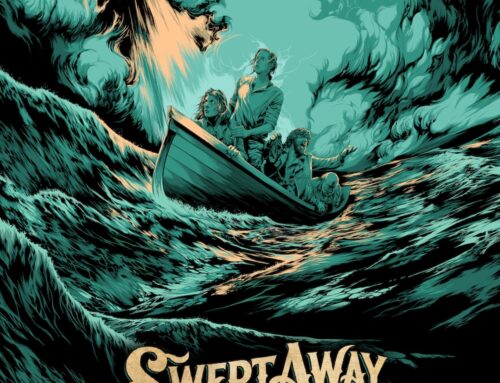![]() Guest Post by Rob Biesenbach
Guest Post by Rob Biesenbach
It’s an old story: PR people are often terrible when it comes to our own PR.
I recently attended an industry event featuring a group of agency leaders who were clearly smart, successful people. Yet when it came to describing their businesses, they all delivered a version of this template:
We’ve been around for [xx] years and are headquartered in [city], with [x] offices around the [country/world]. We have [x] practices and specialize in [y]. Clients include [x, y and z] and recent matters we’ve handled include [a, b and c] …
And so on …
Is it any wonder these opening pitches were barely memorable? Other than the data points, they all said essentially the same thing. Nothing to grab the listener or distinguish one agency from the other.
And these were PR professionals — people who make their living communicating!
Every Organization Needs a Story
What if instead they told the story of their agency — one that communicates its function, purpose, and value proposition in a way that’s unique, compelling and memorable?
And I’m picking on PR people here, but this issue is by no means limited to our profession. Every company, every organization, every person, needs to do a better job telling their story.
That goes for agencies and companies, big brands and boutiques, nonprofits and associations — even government entities.
Why Story?
Here’s what makes stories so powerful:
- Stories persuade. Multiple studies show that stories are far more persuasive than facts and data alone. They work on our brain in a unique way, triggering the release of chemicals that lower our natural defenses and make us more agreeable.
- Stories stick. In the seminal book on influence Made to Stick, the authors performed a study that found that after a presentation, audience members were far more likely to recall the stories they heard than the statistics presented — by a factor of more than 12 to 1!
- Stories connect. When people in my workshops start sharing their stories, the room comes alive as listeners express some version of “I know what you mean” or “I’ve been there.” Suddenly it’s no longer a monologue, it’s a dialogue. Connections are formed and relationships are built.
- Stories stand out. Your competitors may have similar credentials and capabilities, but nobody has your exact story.
- Stories illuminate. In a noisy world, stories provide meaning. They answer the listener’s question, “Why should I care?”
By harnessing the power of storytelling, you can break down walls, build affinity and better position yourself, and your organization, for success.
How to Structure Your Story
There are countless approaches to storytelling, but the fundamental elements are character, conflict and resolution:
- The character of your story can be the organization’s founder or founders — especially if they have a colorful history or strong reputation — or it could be the potential customer or client.
- The conflict is the problem your organization tackles or the market need it addresses.
- The resolution is how you solve that problem in a way that is different (ideally better) than your competitors’ approach. That solution should be tied to your brand promise or unique value proposition.
There’s more that goes into a great story, but those are the basic, foundational building blocks.
A Look at Compelling Corporate Stories
In my new book, I examined a range of business stories — the good, the bad and the ugly. Here’s a look at some of the better stories I’ve found.
Farm equipment manufacturer John Deere has a long, rich history that’s ripe for story:
In 1837 our founder, John Deere, was a typical blacksmith turning out hayforks, horseshoes, and other essentials for life on the prairie.
Then one day, a broken steel sawmill blade gave him an opportunity. He knew that days in the field were difficult for farmers near his home in Grand Detour, Illinois, because they had to interrupt their work to clean the sticky prairie soil off of their cast-iron plows. He also knew that the soil would slide easily off of a highly polished steel moldboard. Steel was scarce in the area, so Deere fashioned a moldboard out of the second-hand blade.
Now, 175 years later, the company that grew out of the success of this innovative plow continues to manufacture advanced equipment to help those who work with the land accomplish their tasks better and faster.
It’s a solid story. You’ve got a character (the company namesake), a conflict (farmers must interrupt their work to clean their plow blades), and a resolution (using steel instead of cast iron) that points to the company’s brand promise as an innovator.
But it’s a long story to tell in person. Here’s how clothing maker Bonobos manages to capture a lot in just a few words:
We started Bonobos because we couldn’t find pants that fit. They were either way too tight or too boxy. We fixed it. Now we’ve expanded our playbook to shirts and suits.
They skip right over the founders (maybe they’re not that interesting?) and make the company itself the character. Not ideal, but I do like the casual, no-nonsense tone and the clear statement of problem and solution.
For a different approach, check out the story ACH Food Companies tells:
You depend on a fully stocked kitchen to share your love with your friends and family. With great taste and unique solutions, ACH brands help you reach your culinary potential.
Full disclosure: ACH is a client of mine. And though I did not work with them on their story, I admire how they make the customer the character and the brand the solution. With a few tweaks, this could be made more conversational.
I’m often asked if storytelling is harder for B2B companies. I agree that products like machine parts and services like supply chain management may not offer the “warm fuzzies” that a hearty bowl of oatmeal imparts, but the task is not impossible.
Take a look at what software maker Salesforce does with its story:
The Fourth Industrial Revolution is changing the way people work, using robotics, AI, the Internet of Things, and more. By making these innovations easier and more accessible, we’re helping create a future with greater opportunity and equality for all.
Once again, not a lot of focus on character, but a solid problem/solution setup and a clear statement of value.
Try These Story Starters
So how do you boil down your organization’s history, people, products and services and explain it all in a simple way to an audience?
It takes time, customer insights and input from a lot of different people. But here are some questions to get you started:
- Why was the company founded? (And is that still relevant today?)
- Who is going to be your character? A specific founder? The customer? The company itself?
- What do your customers or clients most often say about your business?
- What specific problem do you solve?
- How do you do that in a way that’s different or better?
- How do you operate in a way that sets you apart?
- What specific value do you bring?
Remember to make it conversational. A great story on paper may not work when told aloud. And be sure to practice, test it on others and refine it.
Whether you’re trying to win customers, attract the best and brightest talent, or position your firm at an industry event, it’s important to be able to tell the story of your business. One that commands attention and helps you stand out from the crowd.
Image: rawpixel via Unsplash, Creative Commons CC0
 Rob Biesenbach helps organizations and leaders communicate with purpose, power and impact so they can achieve their business goals. He’s an award-winning consultant, an in-demand speaker and trainer and a Second City-trained actor. This post is adapted from his new book, Unleash the Power of Storytelling: Win Hearts, Change Minds, Get Results. Connect with Rob on Twitter or follow his blog.
Rob Biesenbach helps organizations and leaders communicate with purpose, power and impact so they can achieve their business goals. He’s an award-winning consultant, an in-demand speaker and trainer and a Second City-trained actor. This post is adapted from his new book, Unleash the Power of Storytelling: Win Hearts, Change Minds, Get Results. Connect with Rob on Twitter or follow his blog.



![[EVENT]: PR Hacks for Small Biz (online)](https://shonaliburke.com/wp-content/uploads/2021/06/FB-Ad-1200x800-01-01-01-Copy-500x383.jpeg)





Leave A Comment